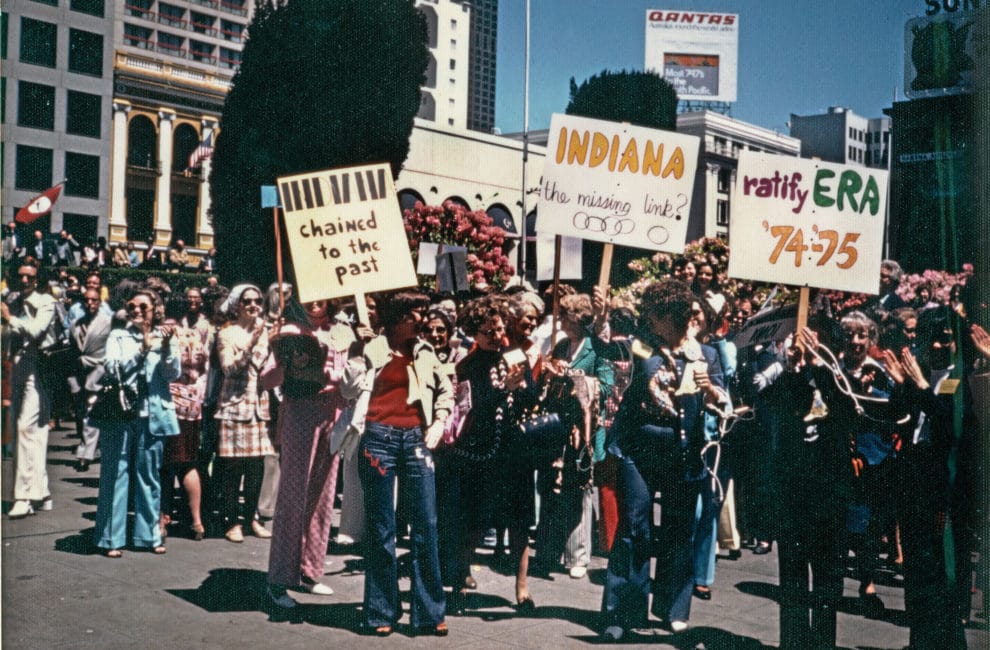Remembering The Indiana Women Behind the ERA

Indiana women rally for the ERA at a League of Women Voters convention in San Francisco. The proposed amendment was becoming a white-hot political issue as supporters lobbied to ratify it in the required 38 states. Indiana was the last to do so, in 1977, but the bill failed anyway. Photo courtesy the Indiana Historical Society
One hundred years ago this month, women in the U.S. were officially granted the right to vote. It was a huge stride, and plenty of Hoosiers stepped up to make it a reality.
Fifty years later, women were still pounding the pavement, holding a Strike for Equality in 1970 with the goal of gender equality in employment and education. Women then were only making 59 cents to every man’s dollar. The strike gained the feminist movement national visibility.
In 1972, the Equal Rights Amendment was passed by Congress and went to the states for ratification. Despite its simple statement (“Equality of rights under the law shall not be denied or abridged by the United States or by any state on account of sex”), the ERA was muddied from its onset.
There was plenty of opposition, led in Indiana by Republican state senator Joan Gubbins and inspired nationally by the determined Phyllis Schlafly and her STOP ERA movement. Their strategy pitted equality against morality, and it was effective. Schlafly, subject of the recent Hulu miniseries Mrs. America, became known as the “sweetheart of the Silent Majority.” The ERA, she argued, would hurt families by paving the way to same-sex marriage, abortion on demand, and women being drafted into military combat.
Indiana, with all the traditional markings of a conservative state, seemed unlikely to ratify. But Hoosiers on both sides of the aisle mobilized in support of the ERA. Grassroots organizations already in place around the state took up the cause of women’s equality, coalescing around the group Hoosiers for the Equal Rights Amendment (HERA), led by Audra Bailey. She was a teacher, feminist, and activist who served on some mayoral task forces for Richard Lugar and voted Republican, though she was never an elected official.
Inspired by this activism, Indianapolis resident Rosalie Kelly, now 81, led the Women’s Agenda for Action in support of the ERA for wage equality and employment opportunities. “A lot of women were trying to break through the barrier of employment,” says Kelly. “Our political aim was to inspire women to consider gaining skills, especially in trades, and try to smooth the way for women in skilled jobs.”
The Hoosier brand of feminism was not without struggle. There were arguments, especially regarding women’s reproductive rights, even within the pro-ERA groups. But in 1977, Indiana became the 35th and final state to ratify before the 1982 deadline.
That left ERA activists three states short of victory for it to be ratified as a constitutional amendment, and plenty of work to be done that remains decades later. Even today, women average 82 cents to every man’s dollar earned.





